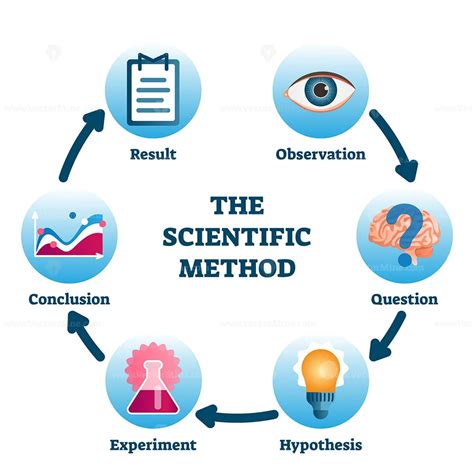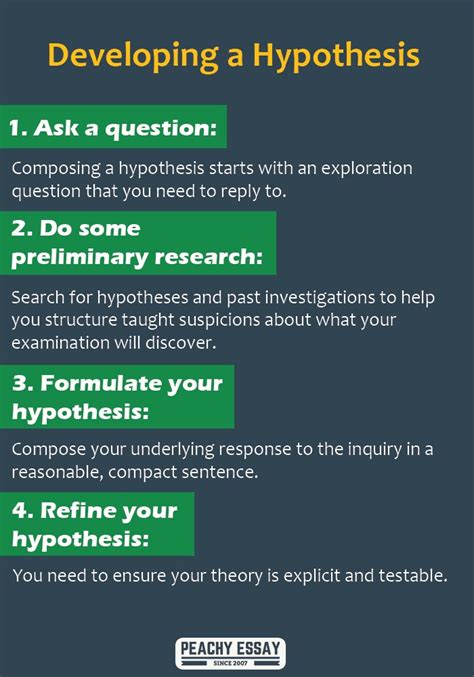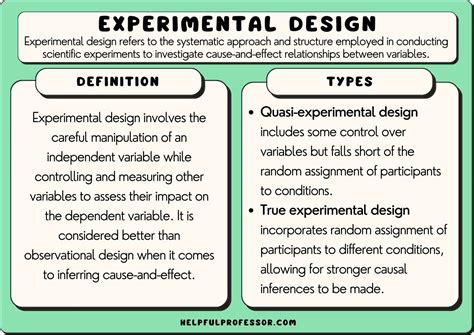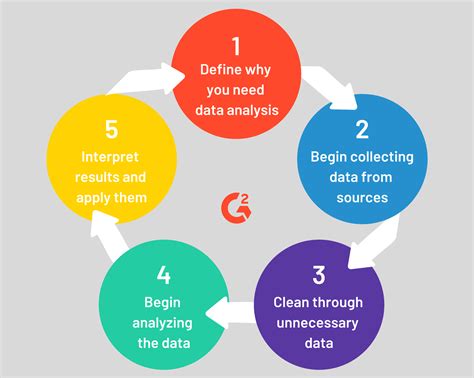Breaking News


Popular News


Learn the steps of the scientific method, including hypothesis development, experiment design, data analysis, and result communication in this informative blog post.Are you curious about how scientists make groundbreaking discoveries and advancements in their fields? The scientific method is a crucial framework used by researchers to answer questions and solve problems through systematic and empirical investigation. In this blog post, we’ll break down the steps of the scientific method, providing a clear and comprehensive understanding of each stage. From defining the scientific method to communicating results, we’ll explore the essential components that contribute to the success of scientific endeavors. Whether you’re a student, a professional in the field, or simply interested in the process of scientific inquiry, this post will guide you through the key stages of the scientific method and highlight the significance of each step in advancing knowledge and understanding. Let’s delve into the world of scientific exploration and uncover the inner workings of this fundamental approach to problem-solving and discovery.
Contents

Defining the Scientific Method
Defining the Scientific Method
When it comes to experimentation, it is important to have a clear understanding of the scientific method. This is a systematic way of testing hypotheses and drawing conclusions based on evidence. The first step in this process is defining the problem or question that you want to explore. This sets the stage for the entire experiment and helps to focus your efforts.
Once you have a clear understanding of the problem, the next step is to formulate a hypothesis. This is essentially an educated guess about the outcome of your experiment. It is important to be specific and testable when formulating a hypothesis, as this will help guide the direction of your experiment. After you have a solid hypothesis, the next step is to design the experiment.
Designing the experiment involves determining the variables that will be tested, as well as the methods and materials that will be used. This step is crucial in ensuring that the experiment is conducted in a way that will provide meaningful results. Once the experiment is designed, the next step is to collect and analyze data. This involves recording the results of the experiment and analyzing them to determine if they support or refute the hypothesis.
After the data has been collected and analyzed, the final step is to draw conclusions and communicate results. This involves evaluating the data and using it to draw conclusions about the hypothesis. If the data supports the hypothesis, the results can be communicated to others through a report or presentation.

When it comes to the scientific method, developing a hypothesis is a crucial step in the process. A hypothesis is a proposed explanation for a phenomenon or a scientific problem that can be tested through further investigation. It is essentially an educated guess that can be supported or refuted based on evidence.
Before developing a hypothesis, scientists must first conduct background research on the topic of interest. This allows them to gather relevant information and identify any existing theories or findings related to the problem they are investigating. Once they have a thorough understanding of the subject matter, they can then begin to develop their hypothesis.
In order to formulate a well-structured hypothesis, scientists should ensure that it is both testable and falsifiable. This means that the hypothesis must be capable of being proven true or false through experimentation and observation. Additionally, it should be specific and clearly state the relationship between the variables being studied.
It’s important to note that a hypothesis is not a final conclusion or assumption, but rather a starting point for scientific inquiry. It serves as a guide for further research and experimentation, paving the way for the next steps in the scientific method.

When it comes to the scientific method, designing the experiment is a crucial step in the process. This is where researchers carefully plan and set up the procedures that will help them test their hypothesis. The design of the experiment should be meticulous, with attention to detail and consideration for potential variables that could affect the outcomes. It is important for the experiment to be well-structured and controlled to ensure accurate and reliable results.
As researchers design their experiment, they need to consider the various components that will be involved. This includes determining the variables that will be measured, as well as the methods and tools that will be used to collect data. It’s essential to have a clear and detailed plan in place to guide the experiment and ensure that all necessary steps are taken to gather relevant information.
Furthermore, the design of the experiment should also address any potential biases or confounding factors that could impact the results. Researchers must take into account any outside influences that may skew the data and implement measures to mitigate these effects. By carefully designing the experiment, scientists can minimize the risk of errors and inaccuracies in their findings.
Overall, the process of designing the experiment is a critical aspect of the scientific method. It lays the groundwork for the research that will be conducted and sets the stage for the collection of data. A well-planned and thoughtful experiment design is essential for generating credible and meaningful results that can be used to draw accurate conclusions.

Breaking Down the Steps of the Scientific Method
Once you have designed and conducted your experiment, the next step in the scientific method is collecting and analyzing data. This step is crucial in providing evidence to support or refute your hypothesis. It involves gathering information and measurements from your experiment and evaluating them to draw conclusions.
One way to collect data is by using qualitative methods, such as making observations or conducting interviews. Another approach is to use quantitative methods, such as recording numerical measurements or conducting surveys. The type of data you collect will depend on the nature of your experiment and the specific questions you are trying to answer.
Once you have collected the data, the next step is to analyze it to identify any patterns, trends, or relationships. This could involve using statistical techniques, creating graphs or charts, or comparing different groups or conditions. The goal is to make sense of the data and draw meaningful conclusions that can be used to support or refute your hypothesis.
It’s important to take a systematic and objective approach to collecting and analyzing data to ensure the validity and reliability of your results. By following this step of the scientific method, you can generate evidence that contributes to our understanding of the natural world and helps advance scientific knowledge.

Once the data has been collected and analyzed, the next step in the scientific method is drawing conclusions. This involves interpreting the data and determining whether the original hypothesis is supported or not. It’s important to note that drawing conclusions does not mean proving the hypothesis true, but rather determining whether the data supports it. If the data does not support the hypothesis, it may need to be revised or reevaluated.
After drawing conclusions, it is essential to communicate the results to others in the scientific community. This is typically done through writing a research paper or presenting findings at a scientific conference. The results should be presented in a clear and logical manner, with a focus on the data and evidence that led to the conclusions. It’s important to include any limitations or potential sources of error in the study to give a full picture of the research.
In summary, drawing conclusions and communicating results are crucial steps in the scientific method. They allow researchers to make sense of their data and share their findings with the wider scientific community. By effectively drawing conclusions and communicating results, scientists contribute to the accumulation of knowledge and the advancement of science as a whole.

What is the first step of the scientific method?
The first step of the scientific method is observation, where researchers gather information and make note of any interesting phenomena.
What comes after observation in the scientific method?
After observation, the next step is to form a hypothesis based on the observed patterns or trends.
What is a hypothesis in the context of the scientific method?
A hypothesis is a testable explanation for a phenomenon, often based on limited evidence, that can be further investigated through experiments and observations.
What is the role of experimentation in the scientific method?
Experimentation is a crucial step in the scientific method, as it allows researchers to test their hypotheses and gather data to support or refute their initial ideas.
How does the scientific method handle results that do not support the initial hypothesis?
If the results of an experiment do not support the initial hypothesis, scientists revise their hypotheses and conduct further experiments based on the new information.
What is the significance of drawing conclusions in the scientific method?
Drawing conclusions involves analyzing the data collected from experiments and determining whether it supports the hypothesis, leading to a better understanding of the phenomenon being studied.
What is the final step in the scientific method?
The final step in the scientific method is communicating the results and findings through publication or presentation, allowing other scientists to review and replicate the experiments.